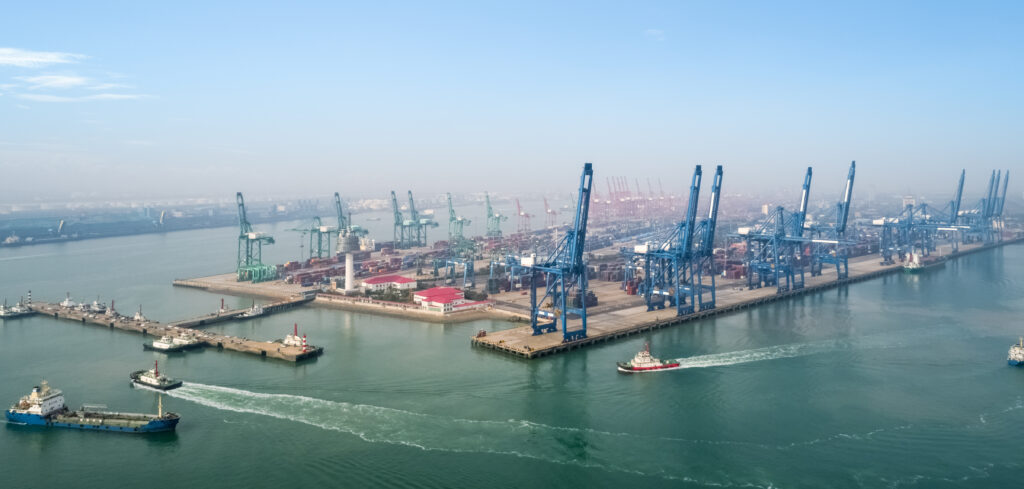The Tianjin Port Group and Huawei have outlined plans to develop a digital twin of the Chinese port to make the facility more intelligent through the use of autonomous vehicles and smart systems.
Yang Jiemin, vice president of the Tianjin Port Group, explained that the partnership has a three-stage plan which consists of building new automated terminals, upgrading the existing traditional terminals, and a comprehensive digital transformation.
Having started large-scale commercial operations in October 2021, the Section C Terminal in the Beijiang port area of the Port of Tianjin uses 5G and L4 autonomous driving technologies to enhance safety and efficiency. The site utilizes automated container cranes and intelligent robots within the horizontal transportation system. Additionally, remote-controlled quay cranes lift loaded containers from cargo ships before placing them onto intelligent robots for movement through the port.
Guided and supported by the Beidou Navigation Satellite System, the robotic transportation solution is led to automatic locking/unlocking stations to unlock containers, before being guided to the container yard using optimized driving routes. These routes are calculated in real time to ensure the process runs efficiently.
This latest smart solution – which partners 5G and L4 autonomous driving technologies – has been put into large-scale commercial application in a partially public scenario at the Section C Terminal for the first time. This has provided a new model for upgrading and transforming existing traditional container terminals worldwide.
“Building more efficient smart ports is becoming an increasingly pressing requirement for the global supply chain,” said Yue Kun, CTO of Huawei’s Smart Road, Waterway and Port business unit. “The Section C Terminal of the Port of Tianjin has now been operating stably for over one year. This proves that 5G and L4 autonomous driving have already been successfully adopted by industries in China and are creating true commercial and social value.”


